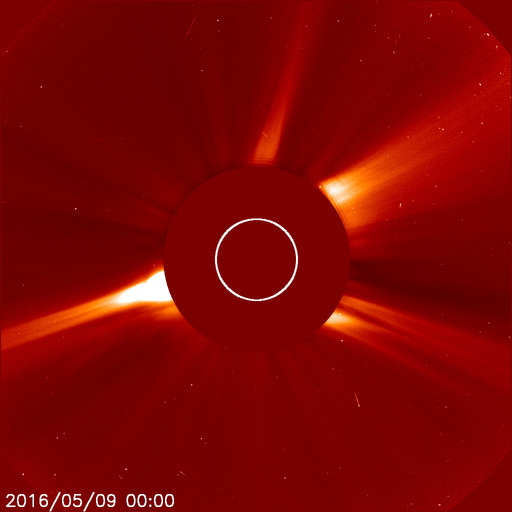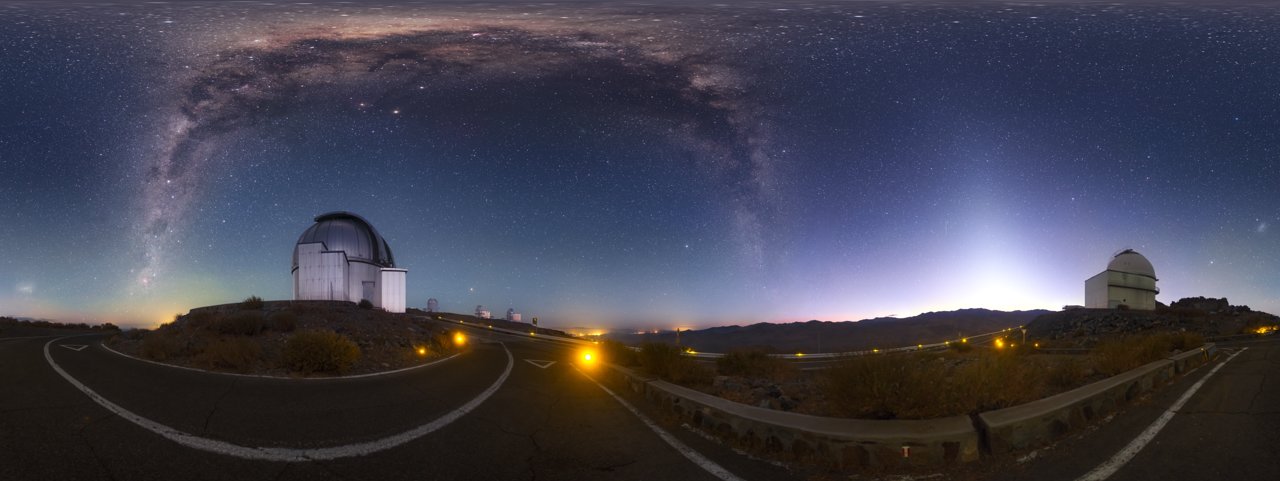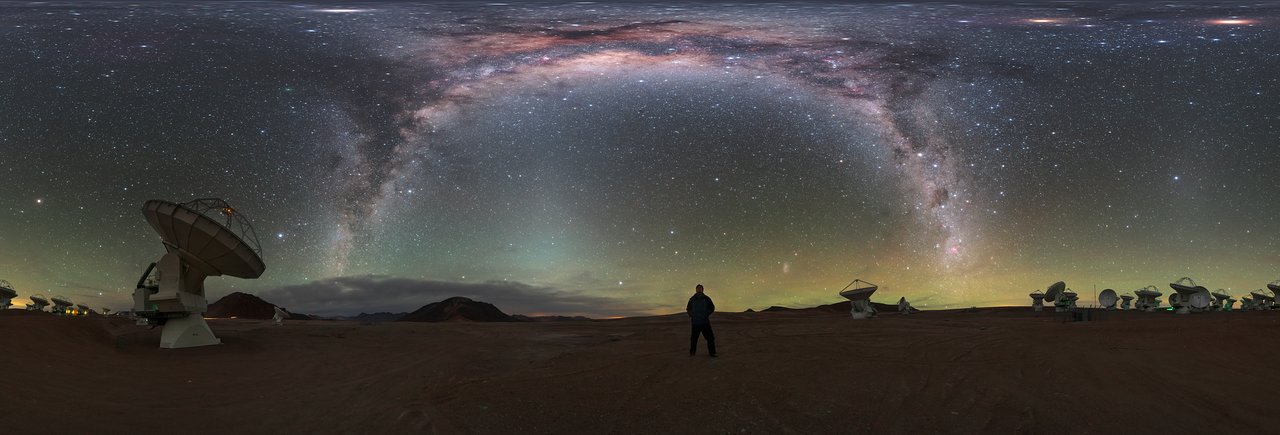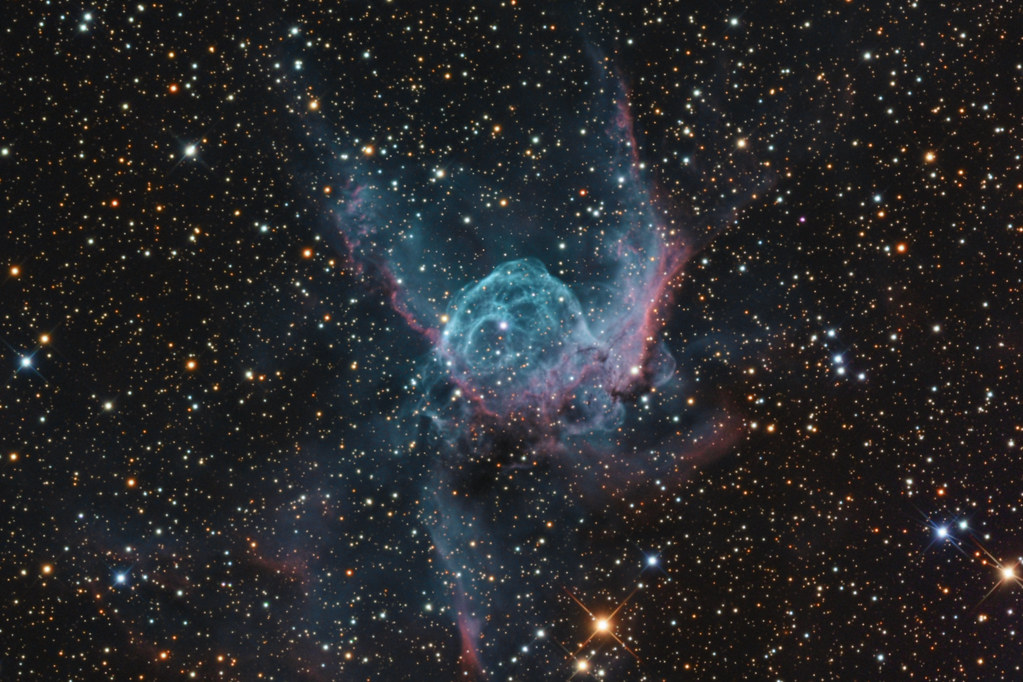Found Images: 2020 May
Found Images: 2020 May
Have you seen a great image or video somewhere that you think would make a great APOD? Nominate it for APOD! Please post as much information here as you have about the image/video with a link to any source(s) for it you know of here, and the editors will take a look.
When posting the image itself, please do not post anything larger than a thumbnail here; please honor the copyright holder's copyright.
Please keep hotlinked images under 500K.
Thank you!
<< Previously
Know the quiet place within your heart and touch the rainbow of possibility; be
alive to the gentle breeze of communication, and please stop being such a jerk. — Garrison Keillor
alive to the gentle breeze of communication, and please stop being such a jerk. — Garrison Keillor
-
starsurfer
- Stellar Cartographer
- Posts: 5409
- Joined: Thu Mar 15, 2012 7:25 pm
-
starsurfer
- Stellar Cartographer
- Posts: 5409
- Joined: Thu Mar 15, 2012 7:25 pm
Re: Found Images: 2020 May
M78
http://www.chart32.de/index.php/component/k2/item/203
Copyright: CHART32
Processing: Johannes Schedler
http://www.chart32.de/index.php/component/k2/item/203
Copyright: CHART32
Processing: Johannes Schedler
-
starsurfer
- Stellar Cartographer
- Posts: 5409
- Joined: Thu Mar 15, 2012 7:25 pm
Re: Found Images: 2020 May
Vela Supernova Remnant and Gum 14-5-7
https://pbase.com/strongmanmike2002/vela_snr_gum_nebula
Copyright: Michael Sidonio
https://pbase.com/strongmanmike2002/vela_snr_gum_nebula
Copyright: Michael Sidonio
-
starsurfer
- Stellar Cartographer
- Posts: 5409
- Joined: Thu Mar 15, 2012 7:25 pm
Re: Found Images: 2020 May
Puppis A
http://www.atacama-photographic-observa ... php?id=160
Copyright: Thierry Demange, Richard Galli and Thomas Petit
http://www.atacama-photographic-observa ... php?id=160
Copyright: Thierry Demange, Richard Galli and Thomas Petit
-
starsurfer
- Stellar Cartographer
- Posts: 5409
- Joined: Thu Mar 15, 2012 7:25 pm
-
starsurfer
- Stellar Cartographer
- Posts: 5409
- Joined: Thu Mar 15, 2012 7:25 pm
-
starsurfer
- Stellar Cartographer
- Posts: 5409
- Joined: Thu Mar 15, 2012 7:25 pm
Re: Found Images: 2020 May
Dr 21
http://deeplook.astronomie.at/dr%2021%20-%20alkor.htm
Copyright: Markus Blauensteiner and Marcel Drechsler
http://deeplook.astronomie.at/dr%2021%20-%20alkor.htm
Copyright: Markus Blauensteiner and Marcel Drechsler
-
starsurfer
- Stellar Cartographer
- Posts: 5409
- Joined: Thu Mar 15, 2012 7:25 pm
Re: Found Images: 2020 May
Sh2-188
http://www.capella-observatory.com/Imag ... h2-188.htm
Copyright: Josef Pöpsel, Stefan Binnewies and Frank Sackenheim
http://www.capella-observatory.com/Imag ... h2-188.htm
Copyright: Josef Pöpsel, Stefan Binnewies and Frank Sackenheim
Re: Found Images: 2020 May
This SOHO LASCO C2 clip of Mercury silhouetted on the solar corona just before/after the 2016 transit is quite interesting:
https://soho.nascom.nasa.gov/data/Theater/
Image: C2
Resolution: 1024 (Mercury is very small in the image)
Dates: 2016-05-18 - 2016-05-20
Mercury is the black dot moving left to right. It first appears on the left edge at 2016-05-18 11:48 and last on the right edge at 2016-05-10 14:36. It's clearer in the May transits (like 2016) than the November ones (like 2019) since it's closer to aphelion/Earth in May, so is angularly bigger.
Here's one frame (click for full resolution to actually see Mercury toward the left, slightly above center):

Copyright notice: Courtesy of SOHO/LASCO consortium. SOHO is a project of international cooperation between ESA and NASA.
https://soho.nascom.nasa.gov/data/Theater/
Image: C2
Resolution: 1024 (Mercury is very small in the image)
Dates: 2016-05-18 - 2016-05-20
Mercury is the black dot moving left to right. It first appears on the left edge at 2016-05-18 11:48 and last on the right edge at 2016-05-10 14:36. It's clearer in the May transits (like 2016) than the November ones (like 2019) since it's closer to aphelion/Earth in May, so is angularly bigger.
Here's one frame (click for full resolution to actually see Mercury toward the left, slightly above center):

Copyright notice: Courtesy of SOHO/LASCO consortium. SOHO is a project of international cooperation between ESA and NASA.
ESO: A Spectacle over La Silla
A Spectacle over La Silla
ESO Picture of the Week | 2020 May 04
ESO Picture of the Week | 2020 May 04
The arrival of daylight at ESO’s La Silla Observatory reveals the splendour of the Universe beyond our little planet in dazzling detail. The Milky Way stretches overhead as a streaming banner of dust backlit by the light of billions of stars. Clouds of interstellar dust grow thickest towards the constellation of Sagittarius (The Archer), which marks the centre of the galaxy — the core around which the spectacular spiral arms rotate. The Galactic Centre also houses a supermassive black hole that produces huge amounts of energy as it consumes its surroundings (Sagittarius A*).
ESO’s telescopes helped to characterise this monstrous black hole. An almost three-decade-long study used several of ESO’s flagship telescopes — including one of the Very Large Telescope’s 8.2-metre Unit Telescopes (Yepun) situated at ESO’s Paranal Observatory, and the 3.5-metre New Technology Telescope (NTT) at La Silla — to track the motions of stars orbiting the centre of the Milky Way. These observations revealed much about the region, including its distance from Earth, and indicated that it contained an object some four million times more massive than the Sun.
This is not the only incredible discovery to come out of La Silla. Telescopes at the observatory have provided proof that long gamma-ray bursts are linked to the ultimate explosion of massive stars, contributed to the discovery of the accelerating expansion of the Universe, and found a potentially habitable exoplanet around the nearest star to Earth, Proxima Centauri.
Know the quiet place within your heart and touch the rainbow of possibility; be
alive to the gentle breeze of communication, and please stop being such a jerk. — Garrison Keillor
alive to the gentle breeze of communication, and please stop being such a jerk. — Garrison Keillor
HEIC: Galaxy Galaxy, Burning Bright! (NGC 3583)
Galaxy Galaxy, Burning Bright!
ESA Hubble Picture of the Week | 2020 May 04
ESA Hubble Picture of the Week | 2020 May 04
In the forests of the night lies a barred spiral galaxy called NGC 3583, imaged here by the NASA/ESA Hubble Space Telescope. This is a barred spiral galaxy with two arms that twist out into the Universe. This galaxy is located 98 million light-years away from the Milky Way. Two supernovae exploded in this galaxy, one in 1975 and another, more recently, in 2015.
There are a few different ways that supernova can form. In the case of these two supernovae, the explosions evolved from two independent binary star systems in which the stellar remnant of a Sun-like star, known as a white dwarf, was collecting material from its companion star. Feeding off of its partner, the white dwarf gorged on the material until it reached a maximum mass. At this point, the star collapsed inward before exploding outward in a brilliant supernova.
Two of these events were spotted in NGC 3583, and though not visible in this picture of the week, we can still marvel at the galaxy’s fearful symmetry.
Know the quiet place within your heart and touch the rainbow of possibility; be
alive to the gentle breeze of communication, and please stop being such a jerk. — Garrison Keillor
alive to the gentle breeze of communication, and please stop being such a jerk. — Garrison Keillor
Re: Found Images: 2020 May
Asteroid 1998OR; 52768
Near Earth asteroid's close pass between 20:30 – 20:56 UT on 28th April 2020.
By Uğur İKİZLER
http://ikizler.org/displayimage.php?alb ... 0&pid=6460
http://ikizler.org/albums/userpics/1000 ... 9_ps_a.png
Near Earth asteroid's close pass between 20:30 – 20:56 UT on 28th April 2020.
By Uğur İKİZLER
http://ikizler.org/displayimage.php?alb ... 0&pid=6460
http://ikizler.org/albums/userpics/1000 ... 9_ps_a.png
Click to play embedded YouTube video.
Last edited by bystander on Fri May 08, 2020 6:33 pm, edited 1 time in total.
Reason: Please, no hot links to images > 500Kb.
Reason: Please, no hot links to images > 500Kb.
AAS: On the Cosmic Web and Slime Mold
On the Cosmic Web and Slime Mold
AAS NOVA Featured Image | 2020 May 04
Revealing the Dark Threads of the Cosmic Web ~ Joseph N. Burchett et al
viewtopic.php?t=40358
AAS NOVA Featured Image | 2020 May 04
Susanna Kohler wrote:The image above and its zoomed-in insets show a reconstruction of the cosmic web — a vast network of filamentary structures of matter spanning the universe. Simulations indicate that the universe’s matter should be organized into these complex threads, but this model has proven difficult to test observationally; most of the material is invisible dark matter, and the remainder is diffuse and distant, making it challenging to detect. A team of scientists led by Joseph Burchett (UC Santa Cruz) has now taken an unusual approach to modeling the cosmic web: they use the growth patterns of slime mold as a foundation. Slime mold has been shown to be very efficient when forming networks between sources of food — and when Burchett and collaborators model slime-mold-like networks forming between a sample of nearly 38,000 galaxies (the “food”) observed with the Sloan Digital Sky Survey, the model produces a web of filaments that well matches simulations of the cosmic web. The team further tests their model against Hubble observations of intergalactic medium (IGM) density, finding that the bulk of the IGM is, indeed, concentrated along cosmic web filaments traced by the slime mold model.
Revealing the Dark Threads of the Cosmic Web ~ Joseph N. Burchett et al
- Astrophysical Journal Letters 891(2):L35 (2020 Mar 10) DOI: 10.3847/2041-8213/ab700c
- arXiv.org > astro-ph > arXiv:2003.04393 > 09 Mar 2020
viewtopic.php?t=40358
Know the quiet place within your heart and touch the rainbow of possibility; be
alive to the gentle breeze of communication, and please stop being such a jerk. — Garrison Keillor
alive to the gentle breeze of communication, and please stop being such a jerk. — Garrison Keillor
-
barretosmed
- Science Officer
- Posts: 482
- Joined: Thu Oct 12, 2017 6:04 pm
Re: Found Images: 2020 May
MONTES APENINOS AND MONTES CAUCASUS
More details:
https://www.astrobin.com/full/d9qwx6/0/?nc=iotd
The MONTES APENINOS to your right are an impressive mountain range approximately 978 km long.
The MONTES CAUCASUS on your left are an impressive mountain range approximately 500 km long.
EQUIPMENT:
MEADE LX200 10 "
ZWO ASI 1600MM COLED
FILTER L BAADER
4/30/2020
SAO PAULO-SP-BRAZIL
Copyright: FERNANDO OLIVEIRA DE MENEZES
More details:
https://www.astrobin.com/full/d9qwx6/0/?nc=iotd
The MONTES APENINOS to your right are an impressive mountain range approximately 978 km long.
The MONTES CAUCASUS on your left are an impressive mountain range approximately 500 km long.
EQUIPMENT:
MEADE LX200 10 "
ZWO ASI 1600MM COLED
FILTER L BAADER
4/30/2020
SAO PAULO-SP-BRAZIL
Copyright: FERNANDO OLIVEIRA DE MENEZES
-
starsurfer
- Stellar Cartographer
- Posts: 5409
- Joined: Thu Mar 15, 2012 7:25 pm
-
starsurfer
- Stellar Cartographer
- Posts: 5409
- Joined: Thu Mar 15, 2012 7:25 pm
ESO: A Celestial Self-Portrait (ALMA)
A Celestial Self-Portrait
ESO Picture of the Week | 2020 May 11
ESO Picture of the Week | 2020 May 11
Some self-portraits are better than others — and this image of ESO Photo Ambassador Petr Horálek is certainly one of the more impressive! Here, the photographer basks in the light of the glowing Milky Way, dwarfed by the scale and wonder of the view overhead.
Horálek is standing at one of the highest and driest locations on Earth, amid the vast array of antennas that make up the Atacama Large Millimeter/submillimeter Array (ALMA). ALMA is located on the 5000-metre-high Chajnantor plateau in the Chilean Atacama Desert.The array sees the Universe in wavelengths of light between infrared and radio — key to observing extremely cold and distant objects — and studies the building blocks of stars, planetary systems, galaxies and life itself. ALMA probes right out to the edge of the observable Universe, and allows astronomers to explore and understand how our cosmos came to be.
The dark, clear, dry skies over Chile make the country one of the best places on Earth to observe the Universe. While professional astronomers make use of the advanced instruments located here, naked-eye observations are often just as breathtaking.
Know the quiet place within your heart and touch the rainbow of possibility; be
alive to the gentle breeze of communication, and please stop being such a jerk. — Garrison Keillor
alive to the gentle breeze of communication, and please stop being such a jerk. — Garrison Keillor
HEIC: Two Supernovae, One Galaxy (NGC 5861)
Two Supernovae, One Galaxy
ESA Hubble Picture of the Week | 2020 May 11
ESA Hubble Picture of the Week | 2020 May 11
Approximately 85 million light-years from Earth, in the constellation of Libra, is the beautiful galaxy NGC 5861, captured here by the NASA/ESA Hubble Space Telescope.
NGC 5861 is an intermediate spiral galaxy. Astronomers classify most galaxies by their morphology. For example, the Milky Way galaxy is a barred spiral galaxy. An intermediate spiral galaxy has a shape lying in between that of a barred spiral galaxy, one that appears to have a central bar-shaped structure, and that of an unbarred spiral galaxy, one without a central bar.
Two supernovae, SN1971D and SN2017erp, have been observed in the galaxy. Supernovae are powerful and luminous explosions that can light up the night sky. The brightest supernova ever recorded was possibly SN 1006. It shone 16 times as bright as Venus from April 30 to May 1, 1006 AD.
Know the quiet place within your heart and touch the rainbow of possibility; be
alive to the gentle breeze of communication, and please stop being such a jerk. — Garrison Keillor
alive to the gentle breeze of communication, and please stop being such a jerk. — Garrison Keillor
Re: Found Images: 2020 May
I'm a little bit disappointed in the ESA Picture of the Week, because I expected a galaxy that is sporting two supernovas now, so that we might see them both if we had access to a suitable telescope. But the supernovas in NGC 5861 exploded 36 years apart, in 1971 and 1917. Bummer. 

So I'll post a picture of a galaxy that really did sport two supernovas at the same time, at least as seen from the Earth.
AnnNASA wrote:
Supernova 2007ck is a Type II event – which is triggered when the core of a massive star runs out of nuclear fuel and collapses gravitationally, producing a shock wave that blows the star to smithereens. Supernova 2007ck was first observed on May 19.
In contrast, Supernova 2007co is a Type Ia event, which occurs when a white dwarf star accretes so much material from a binary companion star that it blows up like a giant thermonuclear bomb. It was discovered on June 4, 2007...
The simultaneous appearance of two supernovae in one galaxy is an extremely rare occurrence, but it’s merely a coincidence and does not imply anything unusual about MCG +05-43-16. Because the two supernovae are tens of thousands of light-years from each other, and because light travels at a finite speed, astronomers in the galaxy itself, or in a different galaxy, might record the two supernovae exploding thousands of years apart.
Color Commentator
-
starsurfer
- Stellar Cartographer
- Posts: 5409
- Joined: Thu Mar 15, 2012 7:25 pm
-
starsurfer
- Stellar Cartographer
- Posts: 5409
- Joined: Thu Mar 15, 2012 7:25 pm
Re: Found Images: 2020 May
-
starsurfer
- Stellar Cartographer
- Posts: 5409
- Joined: Thu Mar 15, 2012 7:25 pm
-
starsurfer
- Stellar Cartographer
- Posts: 5409
- Joined: Thu Mar 15, 2012 7:25 pm
-
starsurfer
- Stellar Cartographer
- Posts: 5409
- Joined: Thu Mar 15, 2012 7:25 pm






